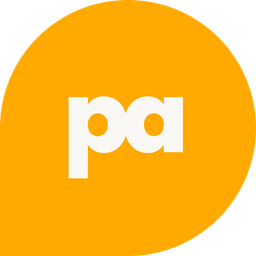In this article, I’ll dive into the world of artificial intelligence, attempt to demystify it, and also share a few of the best AI tools for enablement.
I’ll explain why applying a human approach to AI is key, and share two case studies to highlight why a human approach to AI and automation will lead to the most powerful results.
The world has changed
I'm going to state the obvious - the world has changed. Approximately 74% of companies are shifting to remote first, and there's a 46% expected growth of enablement teams in the next 12 months, according to review42.com,
With these figures in mind, it's safe to say that lots of companies are investing in technology that ensures we stay connected and productive.
And they're using AI and automation to do so.
What is artificial intelligence?
AI means a lot of different things to different people. If I talked to my parents about it, they'd probably compare it to the Terminator.
If I talk to anyone who's been watching Netflix recently, which is basically everyone, they've been watching the Social Dilemma, and they think AI is controlling us.
But for sales ops or a sales enablement professional, they think it means that they get lots of data and analytics to help them become better at their jobs and help their reps be more productive.
It's quite a buzzword, but I'm going to demystify it a little bit and boil it down to the fact we're basically using it to make computers perform human tasks.
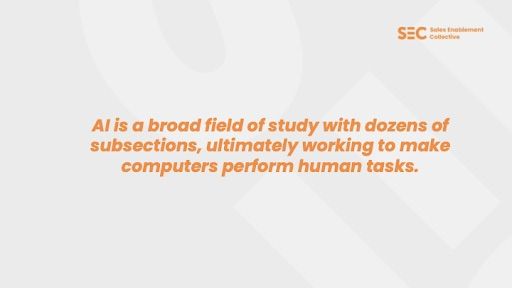
I'm now going to give a couple of examples of how it's done.
Demystifying artificial intelligence
Machine learning
Artificial intelligence involves things like machine learning, deep learning, predictive analytics, and something that might be more familiar to you in the form of Netflix's recommendation engine. Based on what you browse, what you search for, what you watch, and what people like you watch, you'll be recommended movies and TV shows.
Speech & text
Another example of AI is speech and text, things like natural language understanding, natural language processing, and natural language generation. Some good examples of these are Amazon's Alexa or Apple's Siri.
Vision
The last example I'm going to mention is computer vision and image recognition. A really good example of this is autonomous driving cars or vehicles.
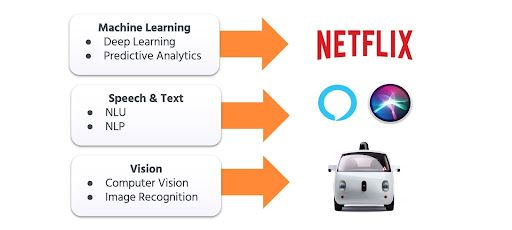
There are lots of other technologies under the umbrella of AI, such as robotics, rule-based AI decision trees, etc.
AI tools for enablement
There's so much AI technology in the sales ops and sales enablement space that creates a more productive environment for reps.
Below are just a few of the companies that can help us do it.

But why does human intervention matter?
Why does human intervention matter when we have all of this amazing technology?
I could boil it down to just one word; context.
To give a few examples:
- AI doesn’t know our competitors (yet) - when I bought a tool in the AI space, I had to tell it who our competitors were.
- AI doesn’t know what deals we're winning and why (yet) - we all have so many different ways of selling and different ideas about what a good deal looks like. There are so many different styles out there. There are so many different messages and ways to resonate with a buyer and a consumer.
- AI doesn’t know executive mandates and company priorities - it needs a human to provide that context and to use tools in a certain way.
I'm now going to cover a couple of examples of how I've been applying the human approach to some of the AI technology out there, and hopefully give you some great ideas to take away.
Applying a human approach to AI technology
At our company, we had a problem in that our knowledge of best practices was siloed. We have two teams that are globally spread apart; half of them are in EMEA, and half of them are in the US.
We needed to foster a culture of coaching and upskilling our reps, and we needed to understand how this impacted their interactions with customers and prospects.
Yes, we could've just recorded our calls on Zoom and spent hours watching them, trying to understand what was happening. But the reality was that we needed a faster way to do this so that we could help faster.
So, we looked at conversational intelligence software like Chorus and Gong.
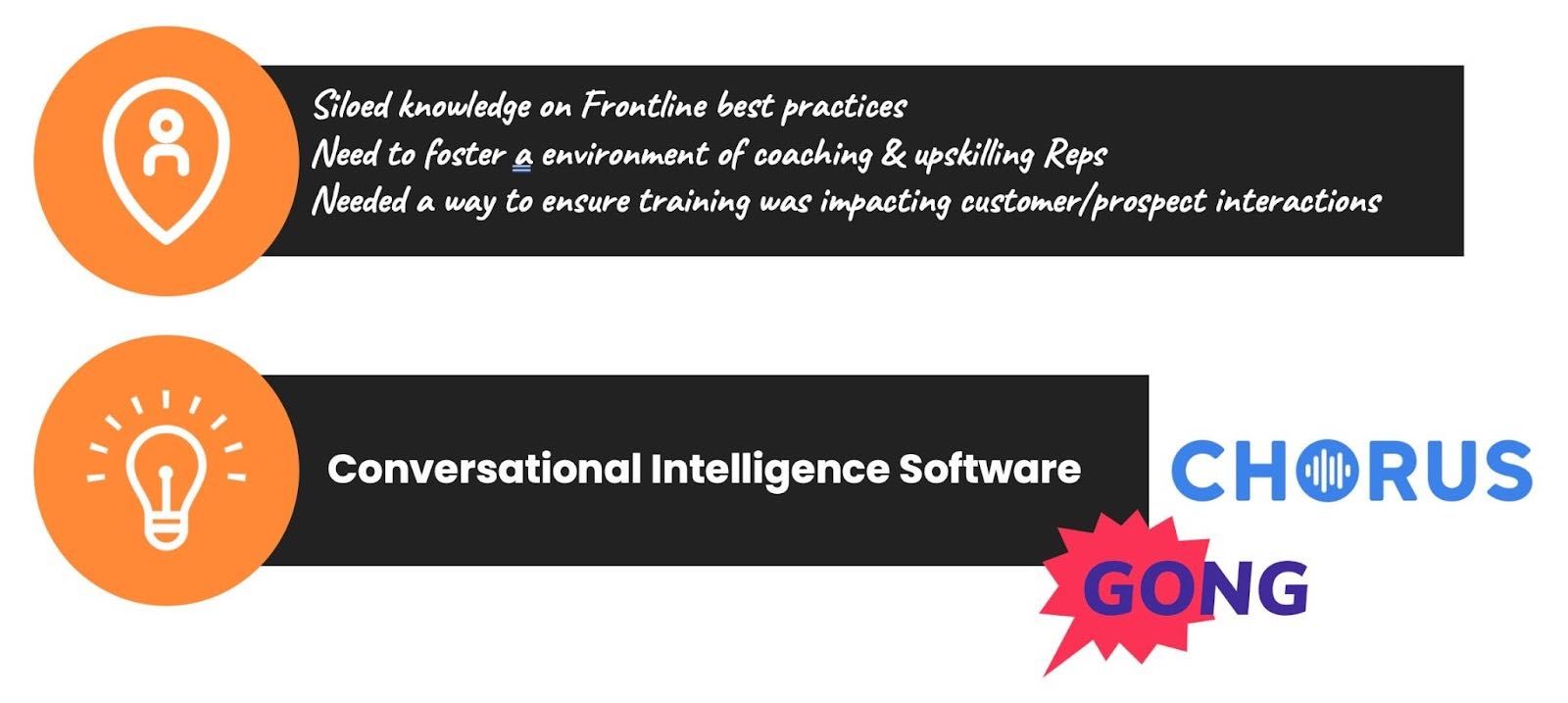
This technology can understand your rep's voice versus a prospect's or a customer's voice and then transcribe the entire conversation.
You're able to give the tool context by adding trackers around competitor names, specific value messaging, products, features, you name it. You can add any tracker you want in the world and it'll make that tracker searchable across all of the calls it's recording.
I'm now going to go through a few different departments and how I was able to provide a way for them to leverage this tool.
Reps
The first one is obviously our reps, which include SEs, STIs, and CSMs. We sold this tool to them as a productivity tool. It's their note-taker, it connects to our CRM, and it creates updates on the next steps of deals.
We also use it to share that siloed knowledge of frontline best practices and leverage it as a positive reinforcement tool.
The most important thing was not to use it as a policing tool.
Managers
The next piece was getting managers on board. Sharing valuable insights with leadership was the best way to sell this tool internally to them and get them to adopt it.
When I was able to come out with, "Hey, you wouldn't believe what I've learned from watching 90 calls in Chorus over the last 90 days," their ears perked up.
They were able to get on board because they wanted to get their own insights, so that was a really easy way to get them to adopt the tool.
Product
The product team was able to get instant feedback loops from prospects and customers. This helped them to identify where potential gaps were and how they could change their roadmap as a result.
Marketing
Marketing was able to garner the top competitors being mentioned by prospects, features that were being mentioned the most during calls, and also insight into if the messaging they're providing is actually resonating with the consumer.
Execs
We brought the executive leadership team up to speed faster and provided context for deals they'd be involved in as executive sponsors. They'd listen to all previous calls with the customer so that they were up to date and prepared for the next call they'd be part of.
Engineering
Engineering was able to build products with more conviction because they were able to better understand the problem they were solving for customers.
Building impactful programs
After you've got everyone on board and rallied around the tool, the next step is to build impactful programs.
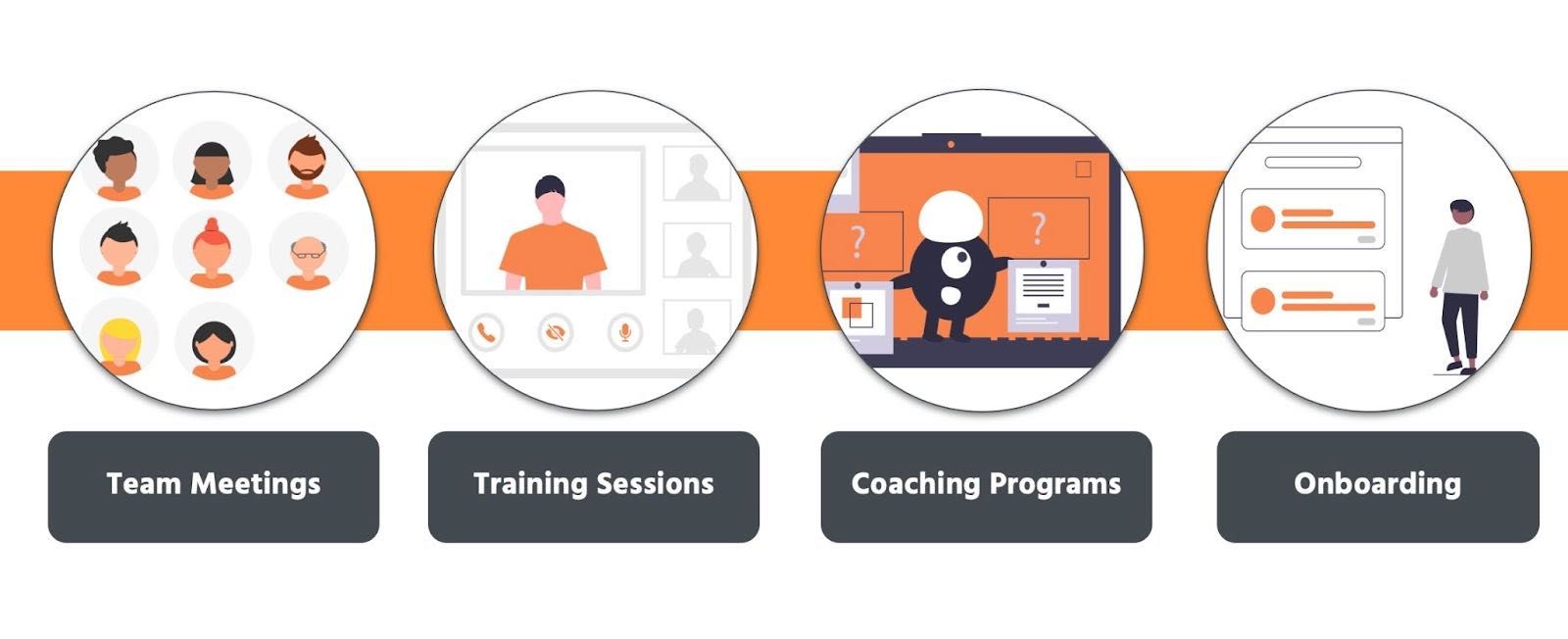
There are a few ways to do this: team meetings, training sessions, coaching programs, and onboarding are just a few examples.
I'm now going to share some ideas.
Objection handling scenarios
We joined role meetings and team huddles to carry out objection handling scenarios. We played a clip of a prospect asking a question, paused the video, and then had a round table discussion where each rep explained how they would've answered the question. We then continued to play the clip to show them what actually happened.
Wow moments
The other thing we do is share wow moments. We'd play the moment and ask the reps, "What did you like? What would you do differently?"
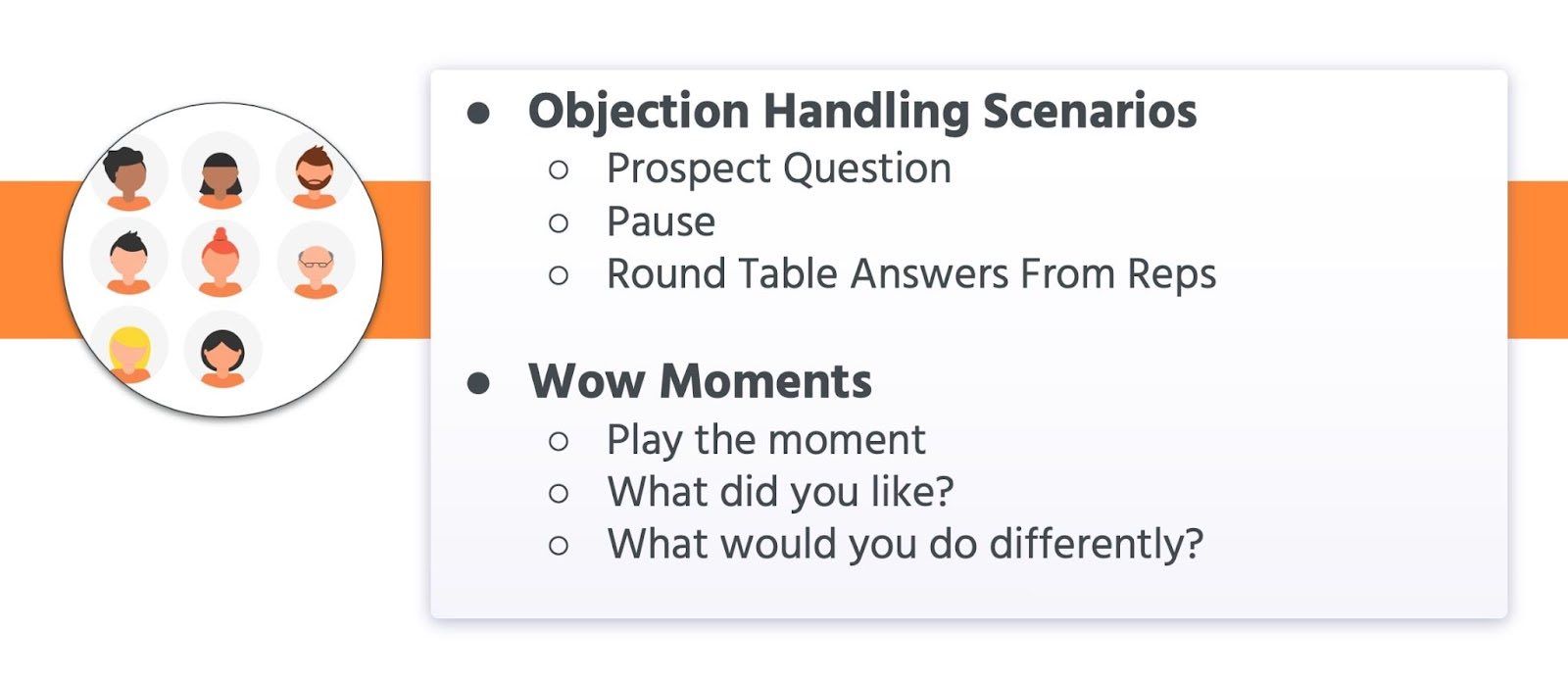
Training sessions
Recently, we've been practicing our methodology. We were talking about what really makes a champion, and then we turned it into a game.
We played a clip of a prospect or customer and we'd ask the team, "Is this a champion?" Each team would answer yes or no, and then they'd be asked to give their reasoning.
If they answered yes, we'd ask, "What characteristics did you see to make you think that way?" And vice versa for the opposing team.
Another way we'd do this was by asking, "What's the solution?"
We'd play a clip of the prospect’s pains, break the reps up into small groups, and get them to practice how they would demo and pitch the solution.
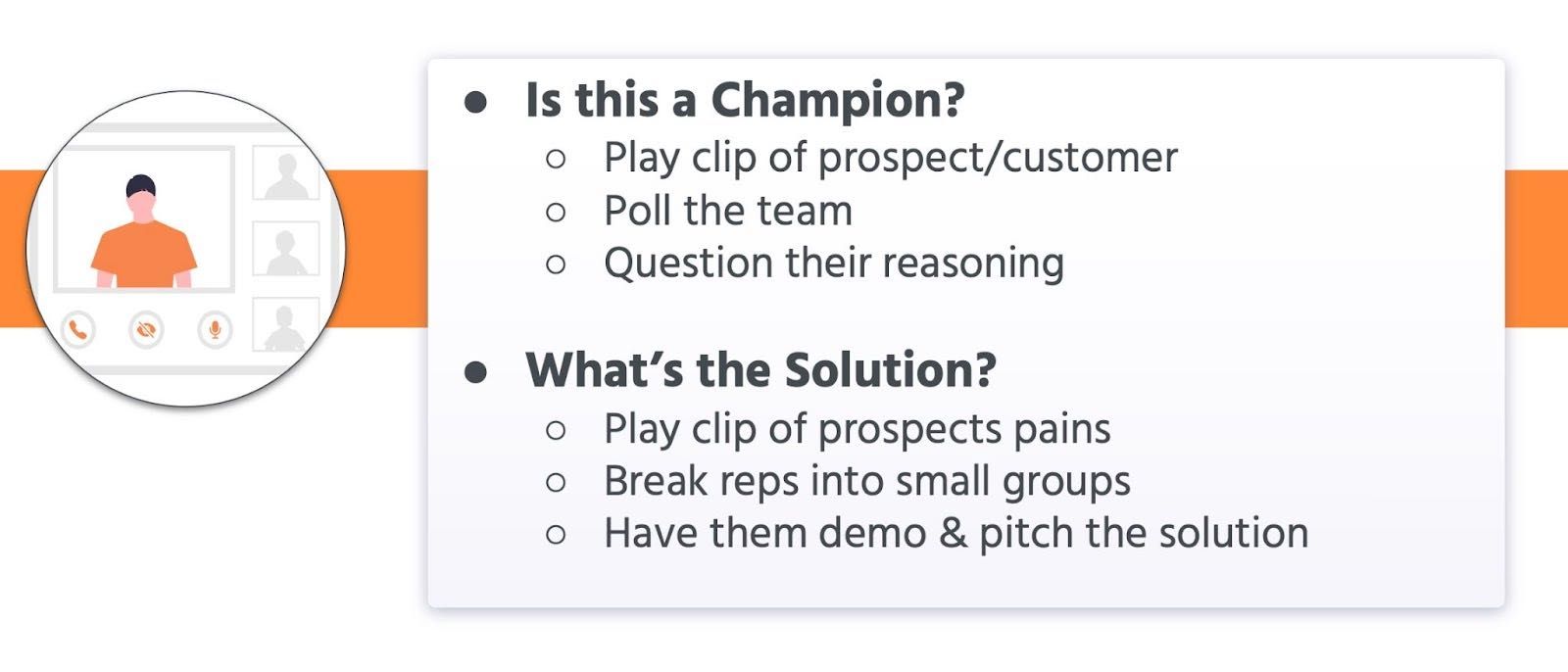
Coaching programs
We've been able to develop some great coaching programs by leveraging the insights from our CRM.
In this particular scenario, we looked at conversion by stage and realized we had a lot of work to do at the top of the funnel.
To understand why conversion was so low, we used conversational intelligence tools to analyze the types of calls that were happening at that stage.
We then partnered with our sales leadership team and came up with five reasons for the low conversion and the things we wanted to improve, and we co-built a scoring rubric for those five things.
The next step was to agree on how many scorecards would be filled out every week for the entire quarter. We've since been monitoring and tracking those metrics for improvement.
The State of Conversational Intelligence report states that coaching at the top end of the funnel on early-stage deals can improve your win rate by 30%.
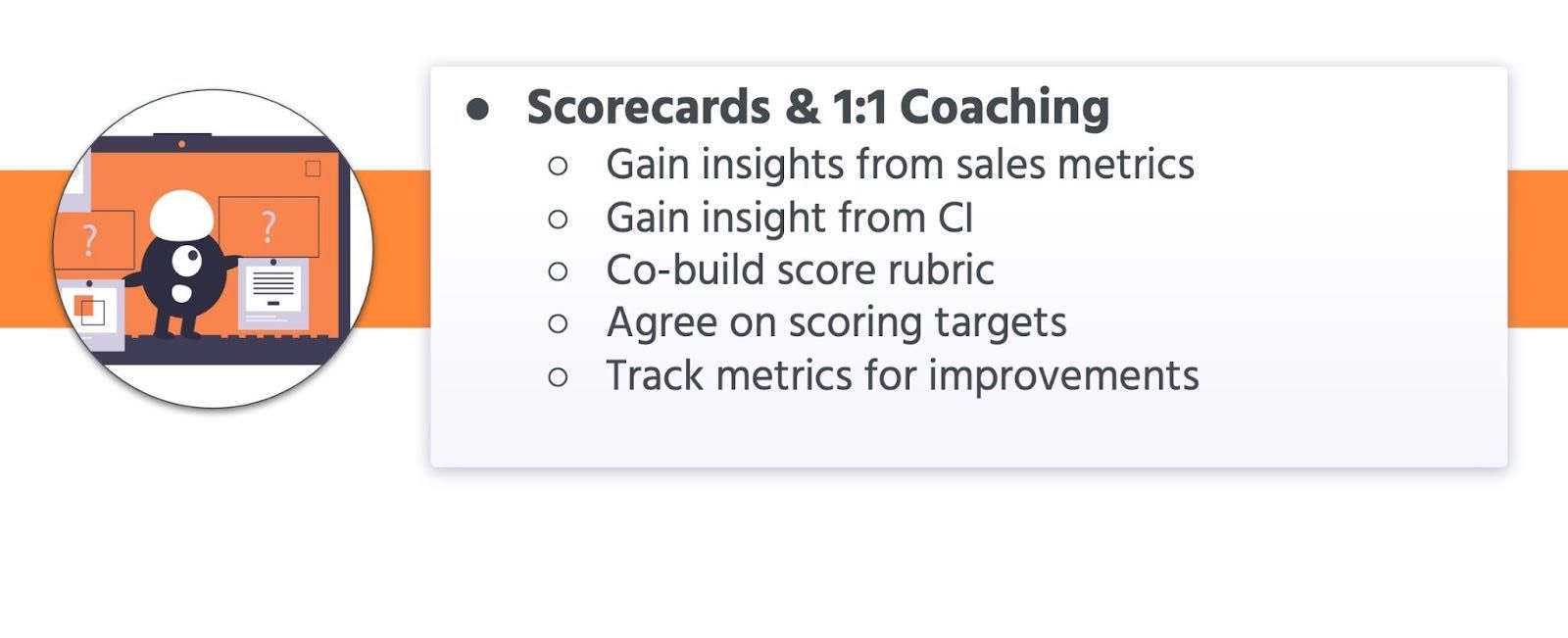
Onboarding playlists
The last one I want to talk about is onboarding playlists.
For our larger training sessions, we would leverage clips and gamify them. We used to have reps shadow calls in real-time, but the problem is that you don't know if it's going to be the best call for them to shadow.
A conversational intelligence tool takes that guesswork away. We were able to build the best of the best buy-deal stages and embed those into our onboarding program.
We were also able to adopt best practices by revenue roles and fit those into everyone's onboarding program.
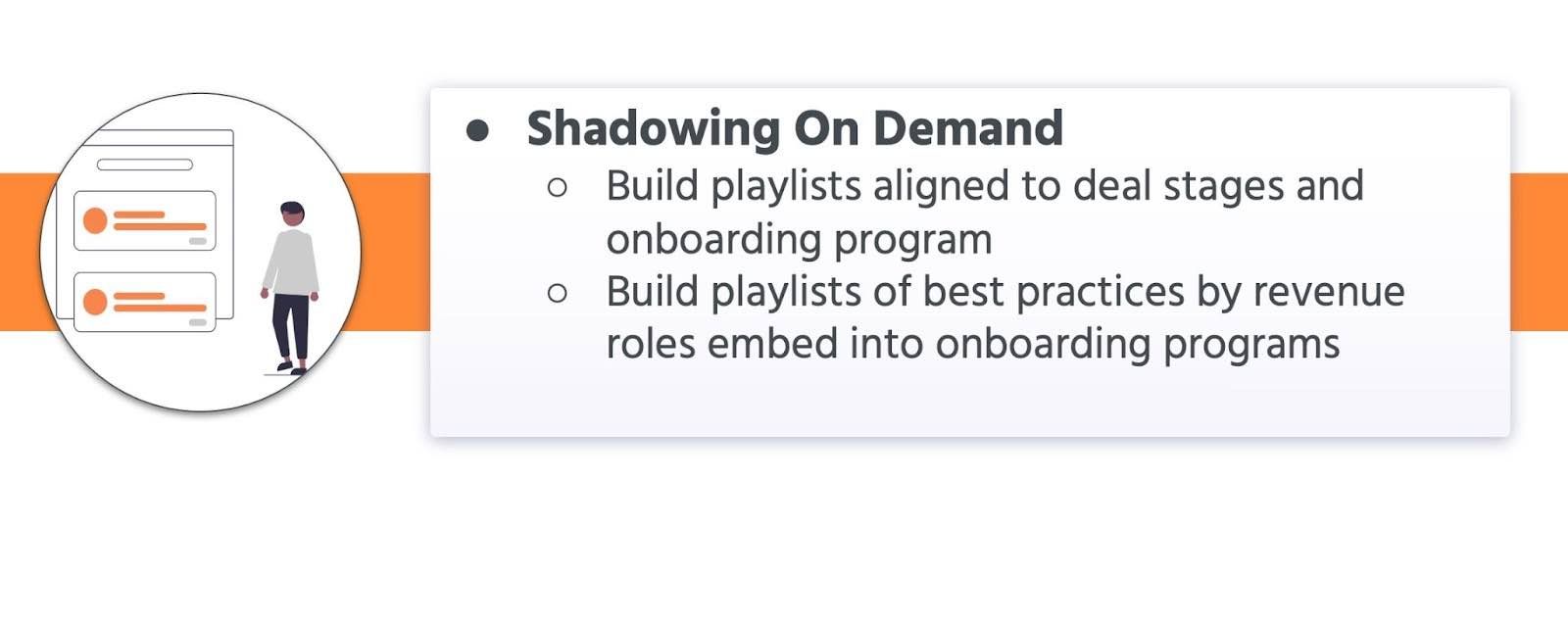
Creating a culture of AI and automation
The most important thing when you're rolling out anything is to create a culture around it. One of the ways we did that at Algolia was by creating a Slack channel.
We called it the Sales Hotline Bling, and it's where we share wow moments of best practices we see on the frontlines from watching Chorus calls.
We're currently gearing up for our first-ever virtual kickoff. We're planning on doing an Al Golden Globe Award ceremony, where we'll have wow moments that have been nominated in various categories.
All of that human context and adoption is what makes us a powerful tool, and enablement is the link to driving this.
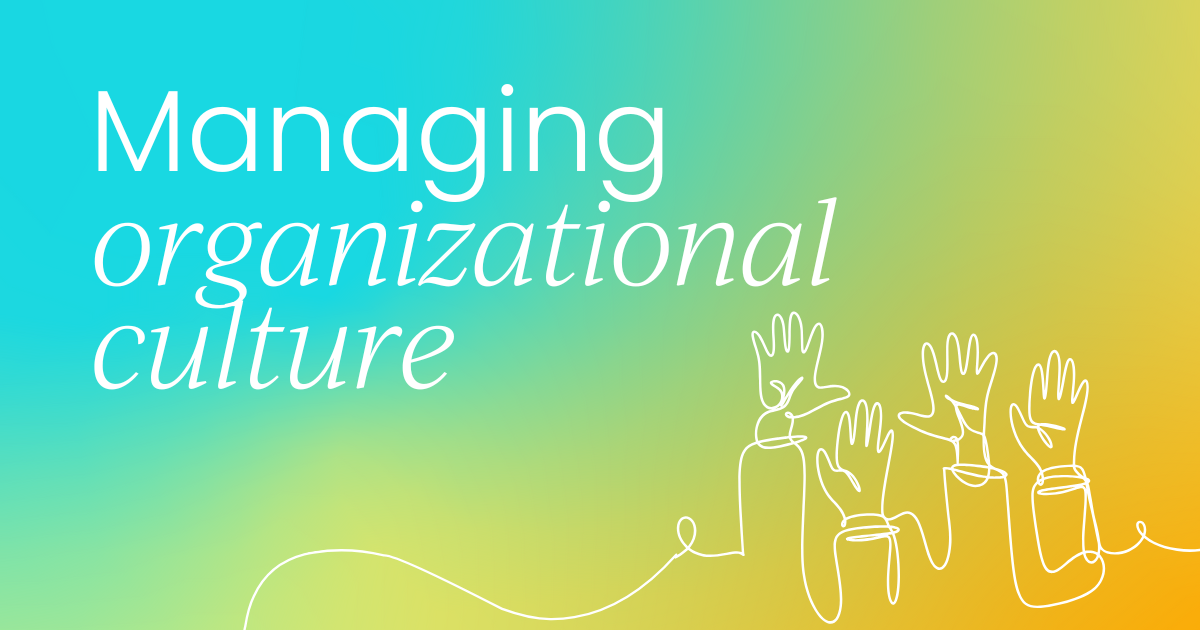
Personalization frameworks
AI is responsible for powering the most amazing personalized experiences. There are Netflix recommendation engines, personalized Spotify playlists, and Amazon's always recommending things for us to buy that are related to what we've bought previously.
But on the flip side, there are automated experiences we don't always love. It's happened to all of us. Automation at scale means potentially sacrificing personalization.
Here's an example of my spam inbox from a few days ago, and unfortunately, I have been the victim of unpersonalized messages.
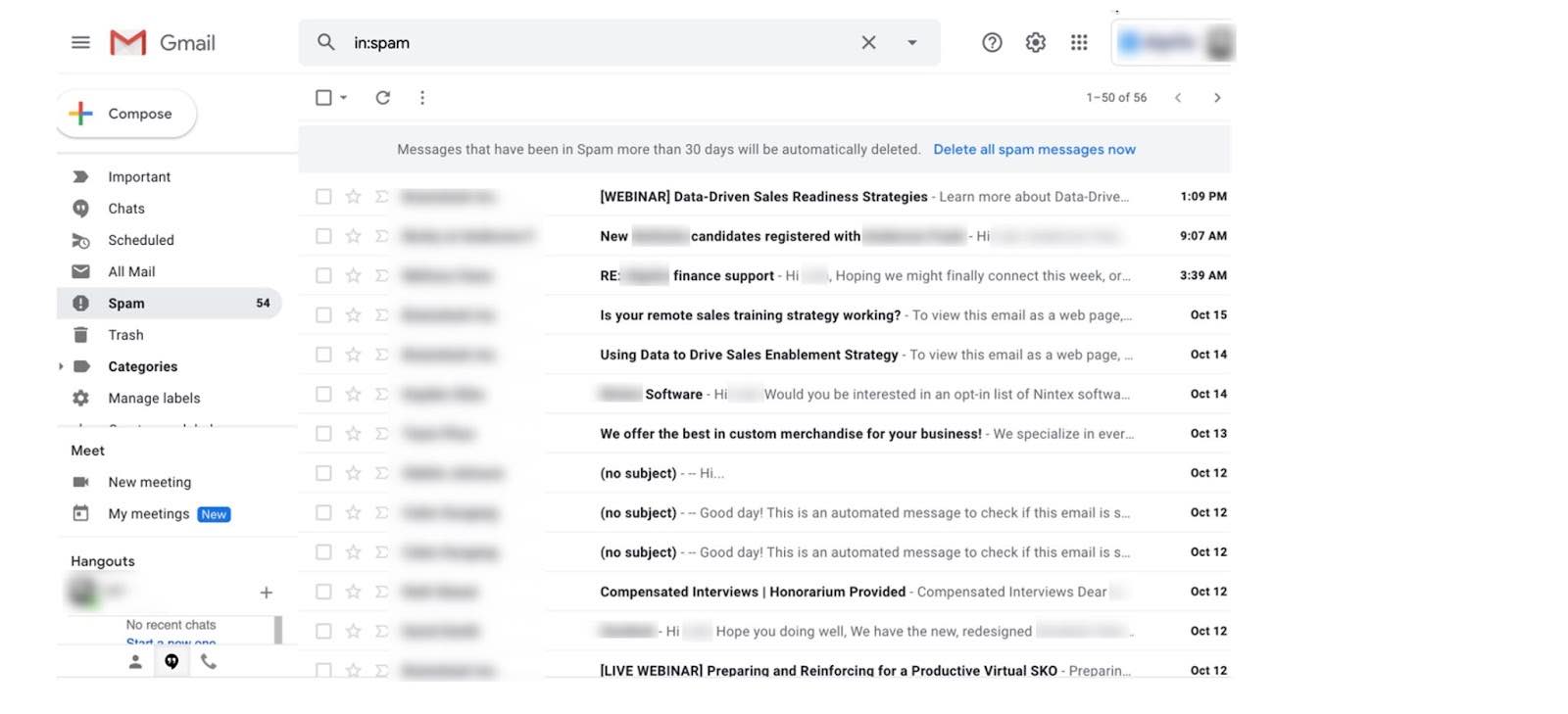
Unfortunately, 'spray and pray' happens a lot more than we'd like to admit. The solution is to use our humanity to remind people that there's a real-life human that responds to that inbox.
We have to do empathy training, we have to be curious, and we have to create frameworks that can help us do that.
I always say to our reps, "If content is king, context is God."
There's a reason why they're not on the end of a marketing automation tool or on the marketing team sending out that blast to everyone.
There's a reason they have this amazing role where they get to create context for other humans.
So, our solution is to use the 5x5x5 framework: five minutes of research, five key insights found as a result of that research, and then five minutes spent writing the email.
Each email in the cadence should only be focused on one of the insights.
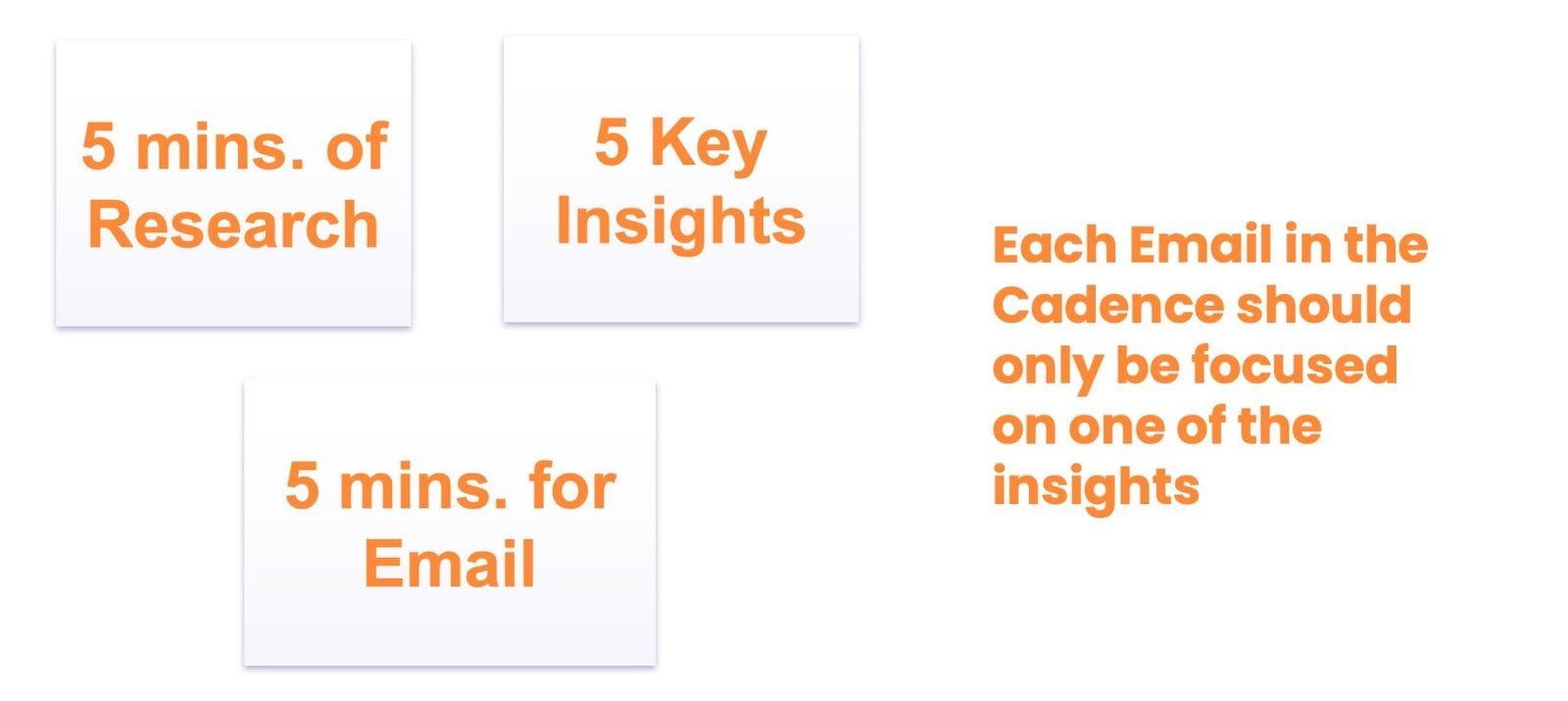
When reps are writing an email, we try to use the 10-80-10 rule. It's 10% personalization at the top, 80% is the email template we get from marketing, and then 10% personalization at the bottom.
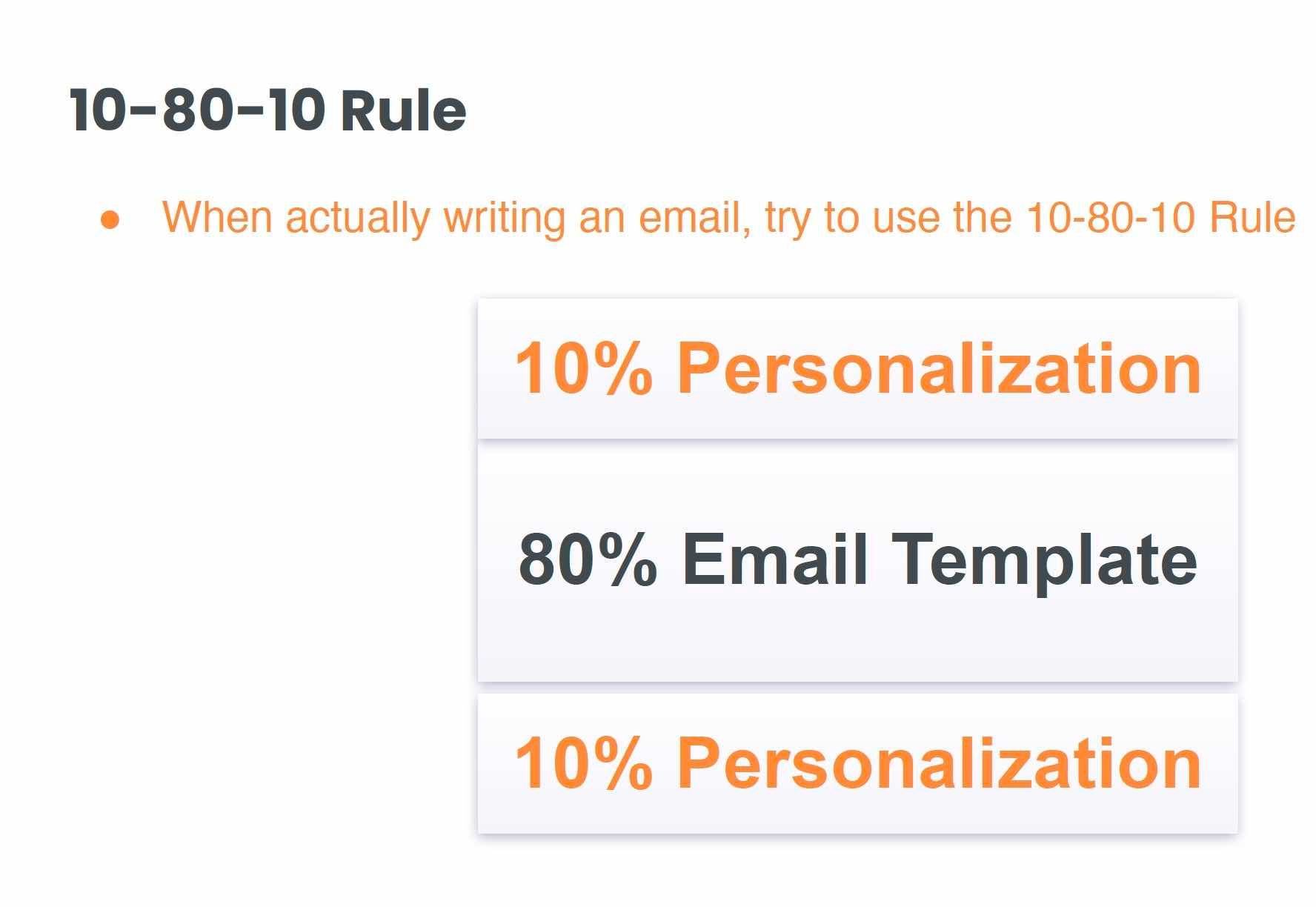
Summary
The truth is that personalization works. People learn from emotion, and people buy through emotion, which is why I strongly believe that AI and automation requires human intervention.
Join the People Alliance community
People leaders, you don’t have to go it alone.
The world of HR is evolving faster than ever, and staying ahead requires a strong network. That’s why we built our People Alliance Slack community, a free online community where top HR pros connect, share insights, and grow together.



 Follow us on LinkedIn
Follow us on LinkedIn